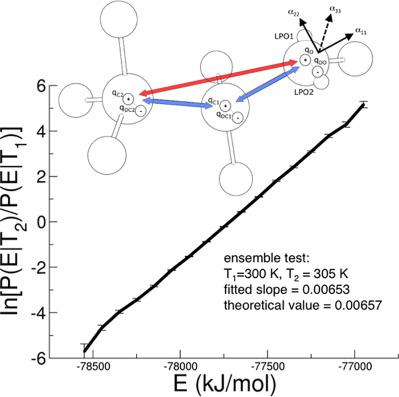当前位置:
X-MOL 学术
›
J. Comput. Chem.
›
论文详情
Our official English website, www.x-mol.net, welcomes your
feedback! (Note: you will need to create a separate account there.)
Molecular dynamics simulations using the drude polarizable force field on GPUs with OpenMM: Implementation, validation, and benchmarks
Journal of Computational Chemistry ( IF 3.4 ) Pub Date : 2018-05-04 , DOI: 10.1002/jcc.25339 Jing Huang 1 , Justin A. Lemkul 1 , Peter K. Eastman 2 , Alexander D. MacKerell 1
Journal of Computational Chemistry ( IF 3.4 ) Pub Date : 2018-05-04 , DOI: 10.1002/jcc.25339 Jing Huang 1 , Justin A. Lemkul 1 , Peter K. Eastman 2 , Alexander D. MacKerell 1
Affiliation

|
Presented is the implementation of the Drude force field in the open‐source OpenMM simulation package allowing for access to graphical processing unit (GPU) hardware. In the Drude model, electronic degrees of freedom are represented by negatively charged particles attached to their parent atoms via harmonic springs, such that extra computational overhead comes from these additional particles and virtual sites representing lone pairs on electronegative atoms, as well as the associated thermostat and integration algorithms. This leads to an approximately fourfold increase in computational demand over additive force fields. However, by making the Drude model accessible to consumer‐grade desktop GPU hardware it will be possible to perform simulations of one microsecond or more in less than a month, indicating that the barrier to employ polarizable models has largely been removed such that polarizable simulations with the classical Drude model are readily accessible and practical.
中文翻译:

在具有 OpenMM 的 GPU 上使用 drude 极化力场进行分子动力学模拟:实现、验证和基准测试
展示了开源 OpenMM 模拟包中德鲁德力场的实现,允许访问图形处理单元 (GPU) 硬件。在 Drude 模型中,电子自由度由通过谐波弹簧连接到其母原子上的带负电粒子表示,因此额外的计算开销来自这些额外的粒子和代表带电负性原子上孤对的虚拟位置,以及相关的恒温器和积分算法。这导致对附加力场的计算需求增加了大约四倍。但是,通过让消费级桌面 GPU 硬件可以访问 Drude 模型,将有可能在不到一个月的时间内执行一微秒或更长时间的模拟,
更新日期:2018-05-04
中文翻译:

在具有 OpenMM 的 GPU 上使用 drude 极化力场进行分子动力学模拟:实现、验证和基准测试
展示了开源 OpenMM 模拟包中德鲁德力场的实现,允许访问图形处理单元 (GPU) 硬件。在 Drude 模型中,电子自由度由通过谐波弹簧连接到其母原子上的带负电粒子表示,因此额外的计算开销来自这些额外的粒子和代表带电负性原子上孤对的虚拟位置,以及相关的恒温器和积分算法。这导致对附加力场的计算需求增加了大约四倍。但是,通过让消费级桌面 GPU 硬件可以访问 Drude 模型,将有可能在不到一个月的时间内执行一微秒或更长时间的模拟,











































 京公网安备 11010802027423号
京公网安备 11010802027423号